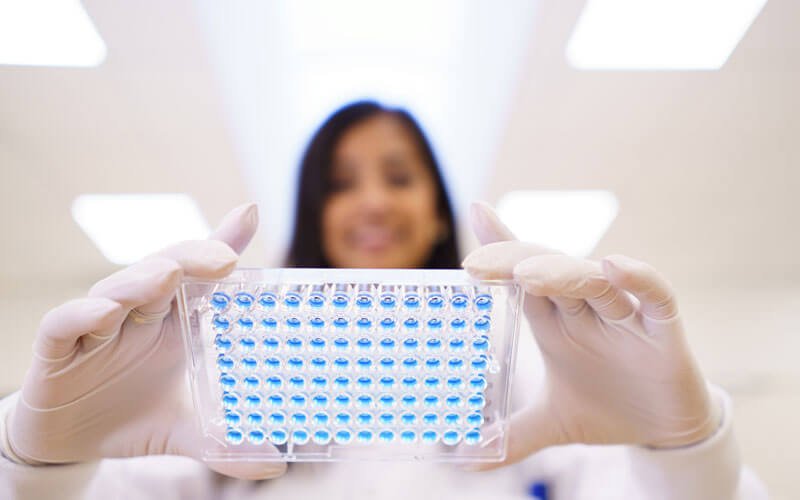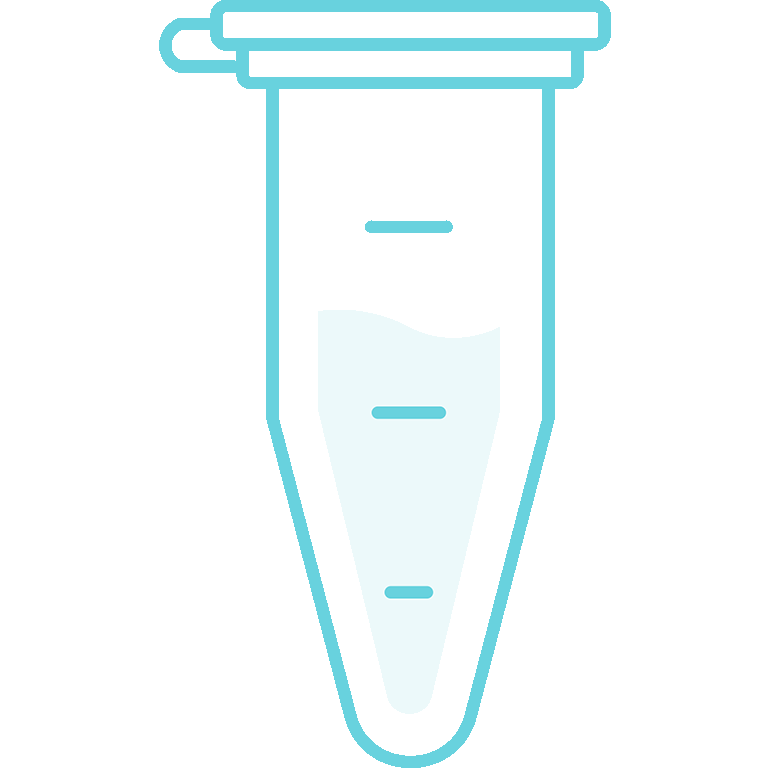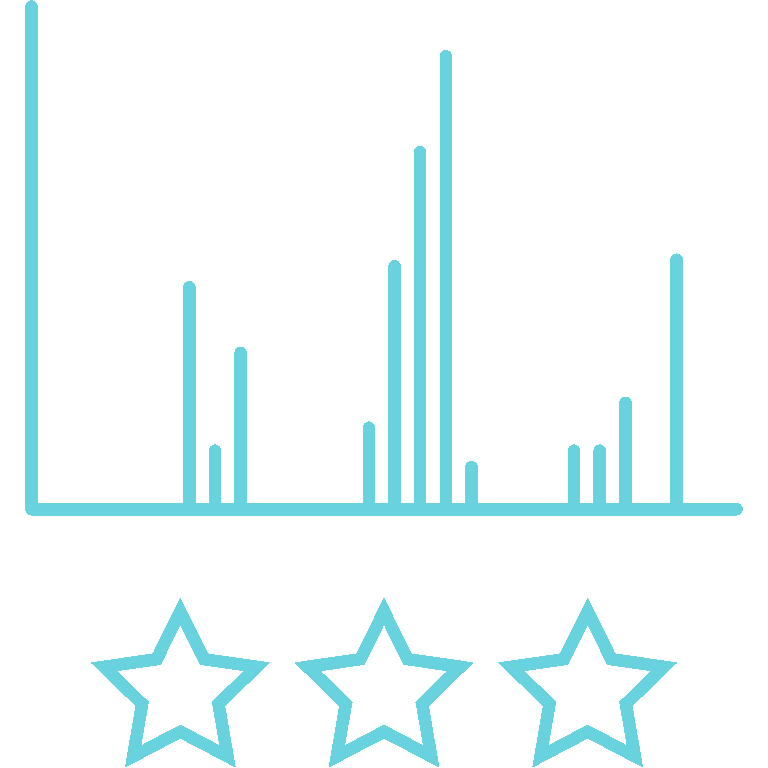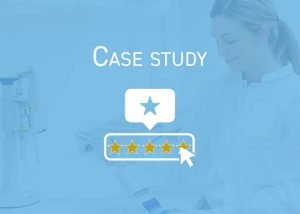Data for risk assessment
Regulatory authorities are increasingly aware that protein impurities, even at low levels, can affect patient safety and product stability. Some residual Host Cell Proteins (HCPs) have been observed to cause immunogenicity, adjuvant effects, or direct biological activity in patients and degradation of products or excipients during storage. Therefore, it is not enough that an ELISA reports a low number – you also need to investigate the individual HCPs.
For this reason, legal authorities call for orthogonal methods, such as mass spectrometry (LC-MS analysis), to identify and quantify individual HCP impurities and for a thorough risk assessment of the resulting data. LC-MS can identify process-related impurities down to 0.1 ppm and allows for data-driven process optimization and evaluation of purification steps.
Why use LC-MS/MS for HCP analysis?
Patient safety and risk assessment
Rule out the presence of HCPs causing immunogenicity, adjuvant effects, or biological activity
Product stability and efficacy
Check for enzymes causing product degradation, modification, loss of activity, or excipient degradation
Manufacturing consistency and product purity
Evaluate purification process clearance, drug substance purity, or batch comparability
HCP-ELISAs tend to be biased towards abundant HCPs and are inherently immunologically weighted, which means they may fail to detect trace or non-immunogenic impurities in the final product. In addition, the readout of immunoassays is an aggregate sum of present HCPs, which does not confirm or deny the presence of specific HCPs of concern.
Using mass spectrometry (MS), you will know which specific HCPs your product contains – and can evaluate if any of them may be of concern.
Active enzymes need only be present at shallow levels to cause product or excipient degradation, or modification. This can lead to loss of drug activity (efficacy) or drug product stability upon storage. Examples of enzymes with significant impact on product or excipient stability include proteases which cleaves the protein biopharmaceutical, and tween-degrading enzymes; lipases, and esterases, which degrade Polysorbate 20 and Polysorbate 80 used as solubilizing excipient in the formulation buffer of many mAbs and biopharmaceuticals.
ELISAs are in general not able to detect specific HCPs at low ppm levels. By relying on HCP-ELISA only, you run the risk that your product may contain one or more HCPs of concern, which may degrade your product or cause adverse reactions in patients.
Since biosimilar products can be produced in different expression systems and are likely purified using processes other than the originator, the HCP impurity profile in the two products may differ.
Authorities ask that biosimilars are subject to just as extensive HCP analysis as their originators to verify that they do not contain HCPs of concern. In some cases, we have found that a biosimilar product is even cleaner than the originator, which has served as a quality attribute of the product.
On demand webinar
Which HCPs to look for and how to measure them
In several clinical trials and during the development of many biologics, residual HCPs, such as flagellin, proteases, and the infamous PLBL2, have proved problematic. They may cause immunogenicity in patients, unwanted biological effects, or enzymatically degrade the drug, decreasing its efficacy and shelf life.
For mAbs, it is now well-described which HCPs from the CHO expression system to be concerned about. Regulatory guidelines assert that documentation should include risk assessments of the individual HCPs identified and removed.

Typical project process
You typically work with
these experts:



Project scope
We will start with an online meeting to learn more about your project. Based on your needs, you will receive a draft proposal outlining the suggested analyses and expected timeframe.
Samples
After signing the final project proposal, we will contact you for details about your samples. An estimated report delivery date will be sent as soon as we receive your samples.
Execution
An Alphalyse project leader will oversee the project and send you status updates by email at regular intervals.
A typical analysis includes:
- Spike-in of internal standard proteins, enabling quantification at low ppm levels.
- Enzymatic digest and analysis of peptides using LC-MS.
- ELISA-MS analyses with an in-well digest of immunocaptured HCPs.
- Setup of a custom-specific database.
Results
You will receive the report by email. As standard, the LC-MS HCP analysis report includes:
- Objectives, description of analytical procedure, results, and conclusions.
- A list of the number and the total amount of HCPs in the sample.
- A list of individual HCPs and their quantities, highlighting HCPs of potential concern, including the physiochemical properties of the HCPs.
- The coverage percentage of HCPs in ELISA.
- Match between the ELISA standard and the harvest or mock samples.
- ELISA Coverage of HCPs found in DS, including coverage of potential problematic HCPs.
- Selected raw data, e.g., excel sheets.
Follow up
Upon completion of the project, your team is invited to go over the results at an online meeting.
Curious to know more?

Whatever challenge or question you may have, we are here to help you solve it. One of our protein analysis experts will discuss the best analysis approach or method for your project by email or online meeting – without obligation.
Client stories
Identifying a polysorbate-degrading lipase in mAbs
Blog: Why results obtained by new ELISA kit differ from the original
Troubleshooting HCP ELISA results using LC-MS and ELISA-MS™
Characterization of a mock sample before ELISA development
Selecting the best HCP-ELISA kit out of five
Analysis of individual human residual proteins
HCP-ELISA coverage analysis without a null cell line
Video: Orthogonal HCPs of mAb product
Webinar: Why do we need orthogonal HCP analysis for mAbs?
Revealing HCPs not detected by ELISA in antibody-drug product
Purified mAb with difficult-to-remove HCP impurity (ubiquitin)
Video: Documenting HCPs in mAb biosimilar vs. originator
Cleaner than the original: mAb biosimilar vs. originator
Webinar: Comparison of impurity profiles – and problematic HCPs – in mAbs
PDF: Top 20 Host Cell Proteins found in monoclonal antibodies
Benefits of LC-MS HCP analysis for risk assessment
Identify specific HCPs of concern found in you drug samples (e.g. lipases, heat-shock proteins)
Quantify each of the HCPs of concern
Use LC-MS data (pI and MW for each protein) for data -driven process optimization to remove specific unwanted HCPs
Evaluate if your ELISA is capable of detecting HCPs of concern found in your process
Set up an MRM-LC-MS assay to check for specific proteins of concern
Follow up with validation of the assay under GMP
What clients say
Knowledge center
Why use native digestion instead of classic digestion with reduction and alkylation?
Unlike classic reduction and alkylation, native digestion largely keeps the antibody drug substance (DS) intact while Host Cell Protein (HCP) impurities digest into peptides. This procedure allows precipitation of the antibody DS, so the remaining supernatant with HCP peptides can be run through the mass spectrometer at a higher concentration.
This method increases peptide identification and lowers the LLOD to around 0.1 ppm, enabling a deeper look into potentially problematic HCPs and a more comprehensive risk assessment.
Can the identity of a specific HCP be coupled with its potential immunogenicity?
We have constructed an extensive database of HCPs of concern – based on the Biphorum database, literature, analyses of commercially released products, and our experience from more than 350 client projects – allowing data-driven risk assessment of the HCPs in your product.
As part of our analytical services, we check the list of all identified proteins in your project against our database and report, which might be of concern, providing you with links to the corresponding reference sources.
What sensitivity can you achieve for HCP characterization and quantification?
Our quantitative mass spectrometry-based assay is suitable for all protein systems. It typically achieves a lower limit of detection (LLOD) of 1-10 ppm, whereas the lower limit of quantification (LLOQ) is around 10-25 ppm.
For mAbs, we can increase the sensitivity to 0.1 ppm using a native digestion assay. On request, we can also set up an MRM-based assay for one or more individual protein(s) of interest with an LLOQ of 0.1 ppm.
Ebook:
Videos:
- Analysis of residual protein in viral products
- Documenting HCPs in mAb biosimilar vs. originator
- Characterization of ELISA reagents: Mock and harvest HCP comparison
- Characterization of ELISA standard: Trouble-shooting ELISA
- Coverage analysis using immunocapture and LC-MS: Orthogonal HCP method for vaccine development and production
- HCP coverage comparison using ELISA-MS: Selecting the best suited HCP-ELISA
- Non-dilutional linearity of ELISA: Hitchhiker HCPs
- HCP-ELISA coverage analysis without a null cell line
- Can your CDMO tackle the Host Cell Proteins in your product?
- Identifying the root-cause of polysorbate degradation
White paper:
Case stories:
- Purified mAb with difficult-to-remove HCP impurity (ubiquitin)
- Analysis of individual human residual proteins using an orthogonal method
- Documenting product quality and process consistency by analysis of residuals
- Analyzing heterogeneous HCP mix from multiple species
- Orthogonal HCP analysis for mAbs
- Revealing HCPs not detected by ELISA (native digest)
- Selecting the best HCP-ELISA of 5 kits
- Characterization of an ELISA standard: Comparing HCPs in mock and harvest samples
- Troubleshooting HCP ELISA results using LC-MS and ELISA-MS™
Poster:
Talk to us
Whatever protein-related challenge or question you may have, we would love to help. Our experts can help you decide on the best analytical approach for your project by email or online meeting - providing advice without obligation.




















